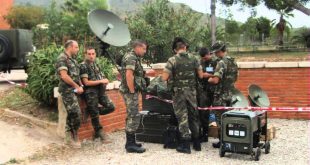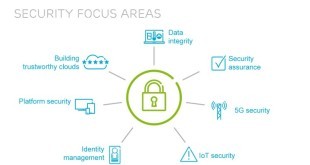A radio is any kind of device that wirelessly transmits or receives signals in the radio frequency (RF) part of the electromagnetic spectrum to facilitate the communication or transfer of information. In today’s world, radios exist in a multitude of items such as cell phones, computers, car door openers, vehicles, …
Read More »New Ground segment innovations to support “New Space” revolution
Space is becoming more dynamic than ever with mega-constellations, multi-orbit satellites, and software-defined payloads. The world’s demand for broadband connectivity has created a new generation of high-throughput satellites in geosynchronous Earth orbit (GEO), medium Earth orbit (MEO), and now low Earth orbit (LEO). In the future, 5G networks will …
Read More »Millimeter or AEHF Satellites technology
Substantially more spectrum bandwidth is available at the Ka band than at the Ku band and other lower frequencies. For example, Ku band allocation is around 2GHz for uplink and 1.3GHz for downlink with actual contiguous bandwidth allocation of less than 0.5GHz per satellite. In comparison, the Ka band SATCOM …
Read More »Military CNS Technology growth
CNS (Communication, Navigation, and Surveillance) comprises a vast portfolio of electronic components and technologies utilized for communication, navigation, and surveillance, which are offered under a single platform. Communication comprises tactical wireless headset; personal radio; field digital switchboard; field telephones; HF, VHF, and UH-combat net radios; and antenna multi-couplers; among others. …
Read More »Aircraft Antennas Requirements and market growth
Antennas are used for a huge range of applications, from mobile phones and “smart” WiFi-connected appliances to GPS and systems that track aircraft and help pilots land safely. Over the years, several distinct types of antennas have come into common use, with designs, frequencies and operating power levels that depend …
Read More »Aeronautical Ad-hoc Network (AANET)
The future of aviation worldwide is one of significant continuing growth in air travel, air cargo, and private general aviation. In parallel with this growth, a significant increase in the supporting information infrastructure will need to occur. The infrastructure will support two primary functions: aviation operational needs (which includes airline …
Read More »Military Satellite Communications terminals market seeing new technologies and trends
A communications satellite is an artificial satellite that relays and amplifies radio telecommunications signals via a transponder; it creates a communication channel between a source transmitter and a receiver at different locations on Earth. The benefit of a satellite communications network lies in its ability to link users to voice, …
Read More »Critical communications broadband capabilities
Public safety organizations and many other professionals need to communicate when coordinating operations and tasks. Critical Communication is essential to react and respond effectively and at the core of the functioning of emergency services. Critical communications include mobile, radio telecommunication systems and devices that must provide reliable and secure communication at …
Read More »5G Mobile Networks deployments have many security and privacy threats, Require New policies and technologies including quantum cryptography
Countries are now racing to deploy 5G, short for 5th generation mobile networking or 5th generation wireless systems. The Fifth Generation (5G) mobile networks promise fast Internet for everyone, smart cities, driverless cars, critical health care, “internet of things” revolution, and reliable and secure communications for critical infrastructures and services. The …
Read More »Backscatter Radio technology enables HD Video streaming to transmitting Internet of Things Sensors Several Kilometers
Backscattering is a form of wireless transmission based on modulated reflection of external RF signals. Whereas conventional radios generate their own signals, backscatter radios transmit data by making tiny changes to reflected signals. This approach requires a minimal number of active components, promising simple low-cost battery-free operations. Since the source …
Read More » International Defense Security & Technology Your trusted Source for News, Research and Analysis
International Defense Security & Technology Your trusted Source for News, Research and Analysis







